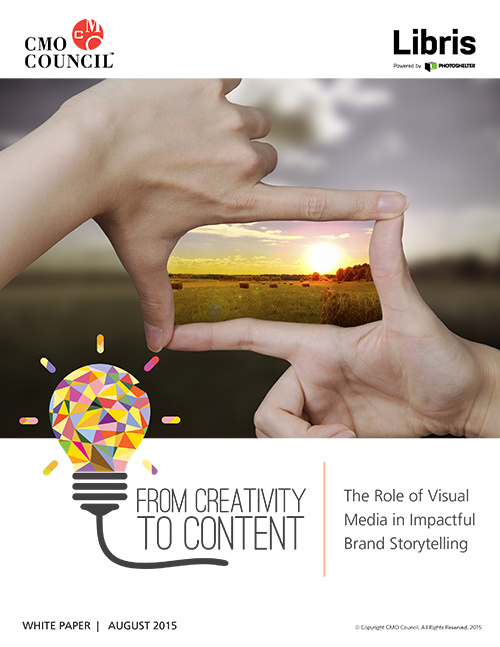Organizations looking to capture the attention of their customers have become increasingly reliant on imagery, video, graphics and photography as part of the marketing arsenal. It is human nature to be drawn to visual engagements. In fact, 40 percent of people will respond better to visual information than plain text (Zabisco).
Marketing is responding to customer behaviors and desires by ramping up the creative machine to generate more content. According to the Content Marketing Institute, 69 percent of marketers are creating more content now than they did one year ago and 70 percent of B2B marketers will be creating even more content this coming year. AOL and Nielsen estimate that there are over 27 million pieces of content being shared each day. The figures get even more staggering when you consider just one form of content creation: every day, infographic production increases by 1 percent (Zabisco).
Let’s consider one area of graphic asset creation: video. According to the CMO Council and Nielsen’s “State of Digital Brand Advertising” report, marketers are not just testing the waters with video, but are shifting major spend away from more traditional communications and into online video to reach and engage their customers. Some 65 percent of brand marketers indicated that investments into video increased between 2013 and 2014, with 49 percent saying those budget dollars shifted from offline advertising allocations. Looking into 2015, some 82 percent say that investment online video will increase, with nearly one in three marketers saying that increase will be substantial.
This boom in investment into graphic assets like video, photography and illustrations begs the question: How are marketers planning to maximize these investments to ensure that operational silos don’t stymie customer engagement success? And how is this costly portion of the marketing supply chain impacting the organization?
Tapping into creativity to create visually impactful experiences is rarely the problem. The real challenge far too many marketing organizations face is accessing the output of that creativity, be it through photography purchased, procured or produced across the organization, the videos being shot, edited and posted online, or graphics being developed for web, print, infographics or presentations.
As marketing turns to automating the massive machine called the marketing supply chain, where and how are graphic and visual assets being shared, filed and managed across the organization? Are the core images that now define the brand experience accessible to the entire organization, or are there simply no controls, measures or metrics that can be applied? Or are creative assets being siloed within functional or operational groups? How can marketing facilitate the breakdown of these creative walls to create more robust experiences and content to activate customer excitement, loyalty and action?
The CMO Council will conduct a brief audit of marketing leadership to better understand where and how siloes are being dismantled and avenues for collaboration, centralization and automation created to help maximize the impact of visual assets. The strategic brief will outline best practices and key questions that must be asked to understand the operational impact of siloed creative content.





